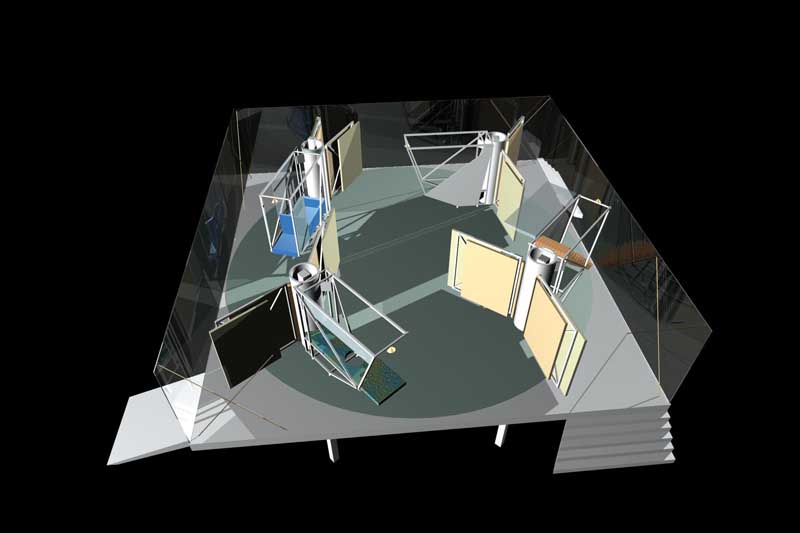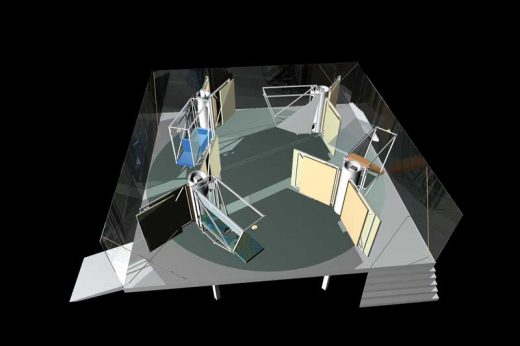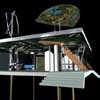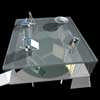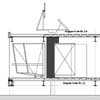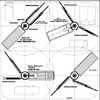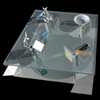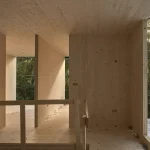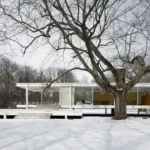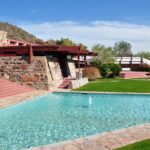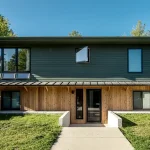Dwelling Palladio Feedback, House Prototype Holland, Dutch Home Design Pictures
Dwelling Palladio Feedback : House Prototype Netherlands
Dutch House Prototype, Rotterdam, Holland design by Hans Moor Architects
22 Apr 2008
Dutch House Prototype
Date of design: 2008
Design: Hans Moor Architects
Dwelling Palladio Feedback
The research for Palladio Feedback started with participation in a contest for a house. The theme of the contest was ‘elementary’ building. Elementary building can be looked at from different angles. It could be a cheaper way of building (more economical).
Or maybe the word ‘elementary’ was to mean the opposite of complex. Complex building often means that many varieties must be constructed that are establish within democratic processes. Think for instance of the often requested thematic experiences. Complexity could mean an increase in costs. A more economical way of building (energy saving, ingenuity etc.) appealed to us, but the opposite of complex building was not of interest. Elementary and complex are not words of a theme that could give direction to a design process.
The design was to be energy efficient. This was achieved by looking at installation technique in another way.
In the twentieth century a lot of installation technique is added to the building process. Around 1900 this was practically non-existent. Now, installation technique makes up thirty to forty percent of the building costs. Furthermore, pipes and building construction these days are complexly interwoven. The building process has become more complex and chaotic. Mutual dependence on partial processes during construction must be minimized. It is attempted to disconnect and unravel the installation technique as much as possible from the design process in relation to the architectural parts. Pipes can be installed in a new and simple way. More pre-fabricated material is used.
The advantages are: efficiency of the building process, possibility for size reduction and energy reduction.
The results of the residence dwelling of Palladio Feedback eventually were transformed because of free energy. Energy savings are established because of free energy. By making this standard, installation techniques as well as other energy savings are directed. The installation technique depends on the architectural position (4 poles with no foundation, in Holland most houses are built on poles). The production method is changed by using column pre-fabrication. The dwelling consists of:
1. a floor
2. a roof
3. a bearing column, including installation technique and the wall as partition
4. free energy
The bearing column is a module of installation technique and spatial partition. The user elements include bath, douche, toilet, kitchen and stairs. The hidden areas in the columns are for pipes for rainwater and sewage. Flexible pipes make this a possibility. The columns can be rotated and offer the user the possibility to create their own space and to adjust it at a later time. The dwelling can be expanded by adding a quarter of the existing house. A quarter house is a standard column with a modular unit which can be provided with extra user facilities.
The architectonical space is determined by the installation technique. Residents can answer to this. For this dwelling, feedback means: lay-outs that influence each other and react to the free energy. In Palladio Feedback the free energy returns from the Unavowable Community to our project. Sun, wind and water are seen technologically in this project. Free energy offers the possibility to make the use of the dwelling more economical. This means less energy consumption and a smaller footprint in the future.
The footprint is a global calculation model, in which materials, energy etc. and production are taken into account, so per product (a brick or house) or per individual the personal footprint can be calculated. With this footprint it is useful to make comparisons to other products in ecological sense.
The end result shows that it is not about improvement of quality in the office projects, with words such as: flexibility, specific areas, thematic areas, but about the spatial change as a result of bearing words that will guide the future: free energy and energy savings.
House Prototype : Hans Moor Architects
Architect: Hans Moor Architects, Rotterdam
Location: Rotterdam, The Netherlands
Architecture in Rotterdam
Contemporary Architecture in Rotterdam
Rotterdam Architecture Designs – chronological list
Fenix Warehouse Panoramic Viewpoint
Design: MAD Architects
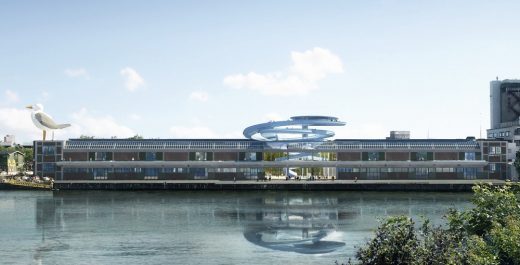
image courtesy of architects
Panoramic Viewpoint for the Fenix Warehouse
Nesselande Station + Bridge ‘Absence of light’ – Hans Moor Architects
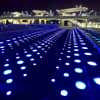
image from Hans Moor Architects 031007
Rotterdam Architecture – Selection
Design: OMA
Coolsingel Rotterdam
Montevideo – tower
Design: Mecanoo architecten
Montevideo Tower
Stadiumpark Area vision
Design: KCAP Architects&Planners
Stadionpark Rotterdam
Dutch architect – Rem Koolhaas
Comments / photos for the Dutch House Prototype page welcome

